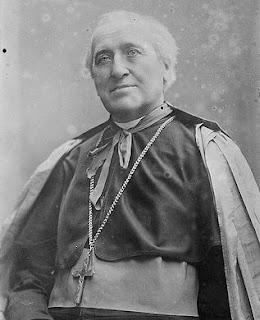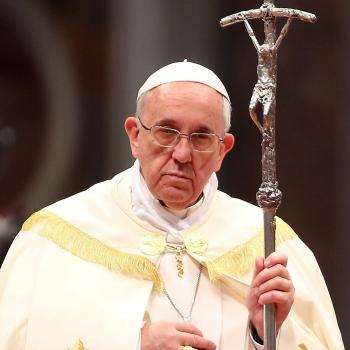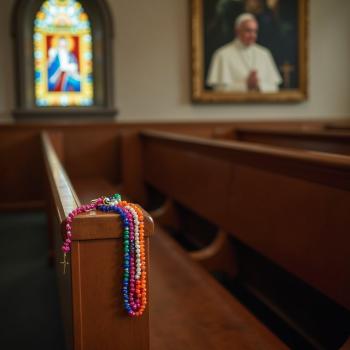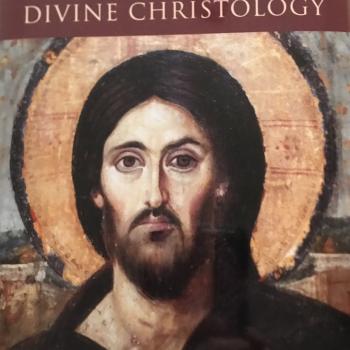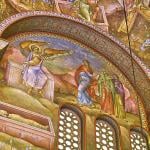John Ireland (September 11, 1838 – September 25, 1918) was the third bishop and first archbishop of Saint Paul, Minnesota (1888–1918). He became both a religious as well as civic leader in Saint Paul during the turn of the century. Ireland was known for his progressive stance on education, immigration and relations between church and state as well as his conservative stance towards drinking and political corruption. He is also remembered for his acrimonious relations with Greek Catholics. He created or helped to create many religious and educational institutions in Saint Paul and Washington, D.C. He was born in Burnchurch, County Kilkenny, Ireland, and was baptized on September 11, 1838. His family immigrated to the United States in 1848 and eventually moved to Saint Paul, Minnesota in 1852. One year later Joseph Crétin, first bishop of Saint Paul, sent Ireland to the preparatory seminary of Meximieux in France. Ireland was consequently ordained in 1861 in Saint Paul. He served as a chaplain of the Fifth Minnesota Regiment in the Civil War until 1863 when he resigned. He was appointed pastor at Saint Paul’s cathedral in 1867, a position which he held until to 1875. In 1875 he was made coadjutor bishop of St. Paul and in 1884 he became bishop ordinary. In 1888 he became archbishop with the elevation of his diocese and the erection of the ecclesiastical province of Saint Paul. Ireland retained this title for 20 years until his death in 1918. Before Ireland died he burned all of his personal papers. John Ireland was personal friends with both Presidents William McKinley and Theodore Roosevelt. Ireland’s funeral was attended by eight archbishops, thirty bishops, twelve monsignors, seven hundred priests and two hundred seminarians. The influence of his personality made Archbishop Ireland a commanding figure in many important movements, especially those for total abstinence, for colonization in the Northwest, and education. Ireland became a leading civic and religious leader during the late 1800s and early 1900s in Saint Paul. Disturbed by reports that Catholic immigrants in eastern cities were suffering from social and economic handicaps, Ireland and John Spalding founded the Irish Catholic Colonization Association. This organization bought land in rural areas to the west and south and helped resettle Irish Catholics from the urban slums.[8] Ireland helped establish many Irish Catholic colonies in Minnesota.[9] He served as director of the National Colonization Association. From 1876 to 1881 Ireland organized and directed the most successful rural colonization program ever sponsored by the Catholic Church in the U.S. Ireland worked with the western railroads and with the Minnesota state government, he brought more than 4,000 Catholic families from the slums of eastern urban areas and settled them on more than 400,000 acres (1,600 km²) of farmland in rural Minnesota. De Graff and Clontarf in Swift County, Adrian in Nobles County, Avoca, Iona and Fulda in Murray County, Graceville in Big Stone County and Ghent in Lyon County were all colonies established by Ireland. Ireland advocated state support and inspection of Catholic schools. After several parochial schools were in danger of closing Ireland sold them to the respective city’s board of education. The schools continued to operate with nuns and priests teaching but no religious teaching were allowed. This plan created enough controversy that Ireland was forced to travel to the Vatican City to successfully defend it. He also opposed the use of foreign languages in American Catholic churches and parochial schools. Using foreign languages was not uncommon at the time because of the recent large influx of immigrants to the U.S. from European countries. Ireland influenced American society by actively promoting the use of the English language by large numbers of German immigrants. He was very politically outspoken and was a close friend to two presidents. He was the author of The Church and Modern Society (1897). He also founded St. Thomas Academy in Mendota Heights, Minnesota. In 1891, Ireland refused to accept the credentials of Greek-Catholic priest Alexis Toth, citing the decree that married priests of the Eastern Catholic Churches were not permitted in the United States by the American Catholic Church, despite Toth being a widower. Ireland then forbade Toth to minister to his own parishioners, despite the fact that Toth had jurisdiction from his own Bishop, and did not depend on Ireland. Ireland was also involved in efforts to expel all Eastern Catholic clergy from the United States of America. Forced into an impassé, Toth went on to lead thousands of Greek-Catholics to leave the Catholic Church to join the Russian Orthodox Church. Because of this, Archbishop Ireland is sometimes referred to, ironically, as “The Father of the Orthodox Church in America.” Marvin R. O’Connell, author of a biography on Ireland, summarizes the situation by stating that “if Ireland’s advocacy of the blacks displayed him at his best, his belligerence toward the Greek Catholics showed him at his bull-headed worst.” At the Third Plenary Council of Baltimore the establishment of a Catholic university was decided. In 1885 Ireland was appointed to a committee, along with, Bishop John Lancaster Spalding, Cardinal James Gibbons and then bishop John Joseph Keane dedicated to developing and establishing the Catholic University of America in Washington, D.C. Ireland retained an active interest in the University for the rest of his life. He founded the University of St. Thomas in 1885 that included a preparatory school now known as Saint Thomas Academy. In 1894 he started the Saint Paul Seminary with the help of Methodist James J. Hill, whose wife, Mary Mehegan, was a devout Catholic. Both institutions are located on the bluffs overlooking the Mississippi River. DeLaSalle High School located on Nicollet Island in Minneapolis was opened in October 1900 through a gift of $25,000 from Ireland. Fourteen years later Ireland purchased an adjacent property for the expanding Christian Brothers school. In 1904 Ireland secured the land for the building of the current Cathedral of Saint Paul located atop Summit Hill, the highest point in downtown Saint Paul. At the same time, on Christmas Day 1903 he also commissioned the construction of the almost equally as large Church of Saint Mary, for the local Immaculate Conception parish in the neighboring city of Minneapolis. It became the Pro-Cathedral of Minneapolis and was later to become the first basilica in the United States in 1926. Both were designed and built under the direction of the French architect Emmanuel Louis Masqueray. John Ireland Boulevard, a Saint Paul street that runs from the Cathedral of Saint Paul, northeast, to the Minnesota State Capitol, is named in his honor. It was named in 1961 at the encouragement of the Ancient Order of Hibernians.
(From Wikipedia)

